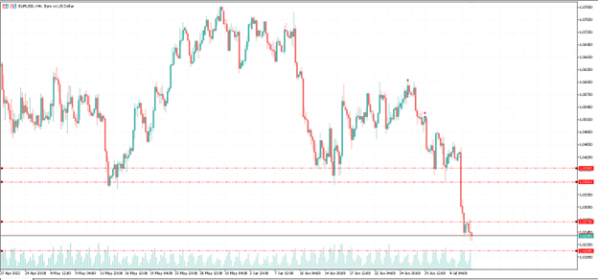The EUR/USD, the most popular currency pair in the world, seems to head towards a parity. Amid all the geopolitical financial shifts happening around the Western World, the expectation of a recession in the US is no longer a disadvantage for the dollar, assuming Europe will also slide into a recession. And the possibility for Europe to get into a recession caused by a gas crisis is likely to be deeper and longer because it cannot ‘simply’ be ended by an adjustment of monetary policy.
In short, the EUR‘s near-term outlook remains challenging, and as the ECB looks to tighten policy, it must do it cautiously, over energy supply concerns, over EU-wide official inflation >8% YoY, and over fears of creating stress in European sovereign bond markets, particularly the Italian Bond market, which looks extremely sensitive. Assuming the US Fed keeps tightening its balance sheet, EUR’s risk-free rates remain moderate and that should further contribute to the strength of the USD and EUR/USD parity.
Nevertheless, ECB‘s cautious approach is more likely to delay rather than derail the Euro’s recovery, and an aggressive response threatens to prove counterproductive for a pro-cyclical currency like the Euro.
On the technical side, the EUR/USD has not found itself in this price range since July 2002. It is worth noting that the price slumped the most since March 2020 the previous day, by breaking a 2-week-old support line.
That said, the oversold RSI and the markets anxiety restrict immediate EUR/USD moves to the upside, and the lowest resistance line to validate a bullish sentiment is at the 1.02700 range, following the immediate next resistance level around 1.03660.
On the contrary, a downside break below 1.0230 could aim for the July 2002 low near 1.0200, and if this weeks US economic reports would prove advantageous for the USD, it would not be surprising for the EUR to drop towards the 1.0100 level which may act as a psychological price halt, right above the slump targeting the 1.000 psychological price magnet.

Leave a Reply